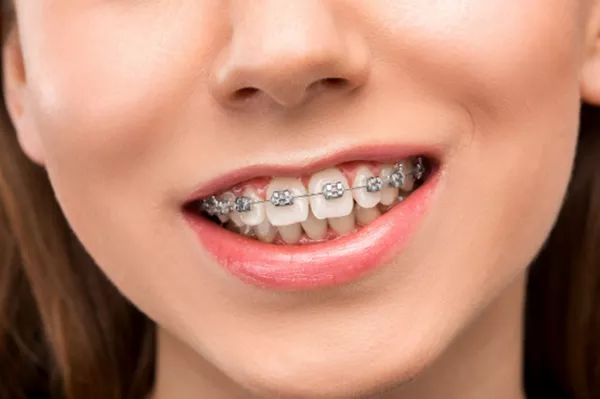Early periodontal disease, also known as gingivitis, is a common oral health condition characterized by inflammation of the gums. It is crucial to address it promptly to prevent its progression into more severe periodontitis, which can lead to tooth loss and other complications. This article will discuss effective strategies and techniques for treating early periodontal disease, providing individuals with valuable insights into managing their oral health.
I. Understanding Early Periodontal Disease
A. Causes and Risk Factors:
- Plaque Buildup: Improper oral hygiene allows plaque to accumulate, leading to bacterial growth and gum inflammation.
- Poor Oral Care Habits: Inadequate brushing, flossing, and regular dental check-ups contribute to the development of gingivitis.
- Lifestyle Factors: Smoking, stress, hormonal changes, and certain medical conditions can increase the risk of gingivitis.
B. Common Symptoms:
- Red, swollen, or tender gums
- Bleeding during brushing or flossing
- Persistent bad breath
- Receding gumline
- Formation of pockets between the teeth and gums
II. Effective Treatment Approaches
A. Professional Dental Cleanings:
- Scaling: Removing plaque and tartar from the tooth surfaces and beneath the gumline.
- Root Planing: Smoothing the tooth roots to discourage plaque buildup and promote gum reattachment.
B. Improved Oral Hygiene Practices:
- Proper Brushing Techniques: Using a soft-bristled toothbrush and brushing gently at a 45-degree angle to the gumline.
- Flossing and Interdental Cleaning: Regularly cleaning between the teeth to remove plaque and debris.
- Mouthwash and Antimicrobial Rinses: Supplementing oral hygiene with therapeutic mouthwashes recommended by the dentist.
C. Lifestyle Modifications:
- Smoking Cessation: Quitting smoking reduces the risk of gum disease progression.
- Stress Management: Adopting stress-reducing techniques, such as exercise or meditation, can positively impact oral health.
- Balanced Diet: Consuming a nutrient-rich diet, low in sugary foods and beverages, supports gum health.
III. Maintaining Long-Term Gum Health
A. Regular Dental Check-ups:
- Periodontal Evaluation: Monitoring gum health and identifying any signs of disease recurrence.
- Professional Cleanings: Scheduling regular dental visits for professional cleanings and plaque removal.
B. Ongoing Oral Hygiene:
- Brushing and Flossing: Maintaining a consistent oral care routine with proper techniques.
- Interdental Cleaning Aids: Using tools like interdental brushes or water flossers for effective plaque removal.
C. Patient Education and Support:
- Oral Health Education: Providing information on proper oral hygiene techniques and the importance of regular dental care.
- Supportive Care: Offering guidance and motivation to patients, emphasizing the significance of ongoing gum health maintenance.
IV. Additional Treatment Options for Early Periodontal Disease
A. Antibiotic Therapy:
- Topical Antibiotics: Dentists may prescribe antimicrobial mouth rinses or gels to reduce bacterial growth and inflammation.
- Oral Antibiotics: In some cases, oral antibiotics may be prescribed to combat bacterial infections and assist in gum healing.
B. Dental Procedures:
- Dental Sealants: Applying dental sealants to the teeth’s biting surfaces can help prevent plaque buildup and protect against cavities.
- Dental Restorations: Repairing damaged or decayed teeth with fillings, crowns, or inlays/onlays can improve oral health and prevent further infection.
C. Periodontal Maintenance:
- Periodontal Cleanings: Regular visits to the dental office for deep cleanings help remove plaque, tartar, and bacteria from the gum pockets.
- Periodontal Maintenance Plan: Developing a customized plan to monitor and manage gum health, including more frequent dental cleanings and check-ups.
V. Home Remedies and Natural Approaches
A. Saltwater Rinse:
- Mixing salt with warm water to create a natural rinse can help reduce inflammation and promote healing.
B. Oil Pulling:
- Swishing coconut oil or sesame oil in the mouth for 10-15 minutes can help eliminate bacteria and improve gum health.
C. Herbal Remedies:
- Aloe Vera: Applying aloe vera gel to the gums may help reduce inflammation and promote healing.
- Tea Tree Oil: Diluting tea tree oil with water and using it as a mouth rinse can have antimicrobial effects.
VI. When to Seek Professional Dental Care
A. Consult a Dentist if:
- Symptoms worsen or persist despite home care efforts.
- There is severe pain, abscess formation, or pus discharge.
- Gums become excessively swollen or bleed excessively.
- Teeth become loose or shift in position.
B. Importance of Early Intervention:
- Early treatment prevents the progression of periodontal disease and potential tooth loss.
- Timely intervention minimizes the need for more invasive and costly procedures in the future.
Conclusion
Treating early periodontal disease involves a combination of professional dental care, improved oral hygiene practices, and sometimes additional treatment options. Antibiotic therapy, dental procedures, and periodontal maintenance play a crucial role in managing gingivitis effectively. Home remedies and natural approaches can complement professional treatment and promote gum health. It is essential to seek professional dental care if symptoms worsen or persist, emphasizing the importance of early intervention to prevent further complications. By adopting a comprehensive approach to oral health and following the guidance of dental professionals, individuals can effectively treat early periodontal disease, restore gum health, and maintain a healthy smile for years to come.
Related Topics:































